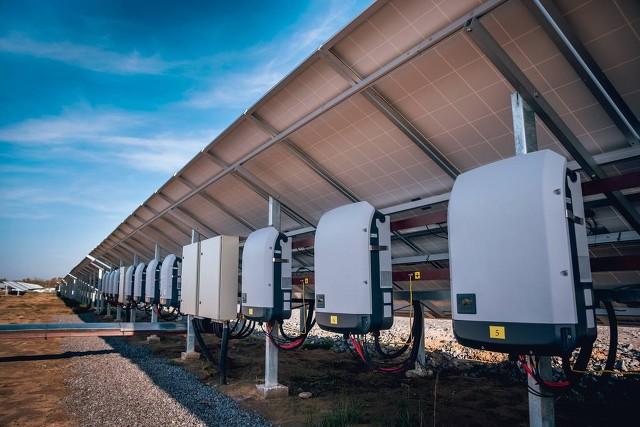What is a PV Inverter; A inverter is an electrical device that converts direct current (DC) into alternating current (AC). It consists of an inverter bridge, control logic, and filtering circuit. Specifically, it converts low voltage (12 V, 24 V, 48 V) into high-frequency AC power supply (220 V). the most commonly used is PWM technology. 
Difference between pv inverter & distribution transformer;
Distribution transformers, based on the principle of electromagnetic induction, achieve electrical energy conversion by converting alternating current energy from one voltage and current into alternating current energy from another voltage and current of the same frequency. The function of a transformer is to change the voltage, which can not only increase the electricity generated by the power station to high voltage to reduce losses in transmission and facilitate long-distance transmission of electricity, but also gradually reduce the voltage of the high voltage electricity at the place of use and send it to individual users.
A PV inverter can be divided into four main types; Centralized PV inverter; String PV inverter; Distributed PV inverter and Micro PV inverter.
Centralized PV inverters are first collected power and then inverted;
The DC power generated by photovoltaic panels is assembled into a larger DC power and then inverted. This type of power capacity is relatively large, with a single unit capacity generally above 500KW. It has the advantages of high output power, mature technology, high power quality, and low cost. However, it also has the disadvantage of insufficient MPPT tracking accuracy, which can affect the efficiency and power capacity of the entire photovoltaic power plant when encountering cloudy, shaded, or single string faults, And it requires a dedicated control room with ventilation and heat dissipation, so it is often used in centralized ground large-scale photovoltaic power plants with uniform sun-light.
String inverter first inverts DC power into AC power and then collected
Separate maximum power peak tracking is performed on several sets of photovoltaic strings, which are then inverted and integrated into the AC power grid. The power of this type of inverter is relatively small, with individual power generally below 100KW. With technological progress and increasing demand for cost reduction and efficiency, the power gradually increases to products with larger power such as 136KW and 175KW. It has the advantages of a large number of MPPTs, flexible component configurations, high tracking accuracy, high power generation, and fast operation and maintenance. However, it also has the disadvantages of slightly poor power generation quality and high cost. It is mainly used in small-scale household distributed power generation, small and medium-sized industrial and commercial rooftop power plants, and can also be applied in centralized photovoltaic power generation systems.
Distributed PV inverter
By controlling the optimizer with multiple MPPTs in front, the optimization function of multiple MPPTs is achieved. After the convergence, a centralized inverter is used for inversion. This kind of inverter combines the advantages of “single centralized inverter” of large centralized Solar inverter and “multi-channel MPPT tracking and optimization” of string type inverter to achieve low cost and high reliability of centralized inverter and high power generation of string type inverter. Compared to centralized inverters, distributed inverters have a 2% -5% increase in power generation, and have better power quality, grid adaptability, and lower system investment costs. The disadvantages of distributed inverters are limited engineering experience and the need to verify their safety and stability.
Micro PV inverter
Separate maximum power peak tracking is performed on each photovoltaic module, which is then converted into the AC power grid through new energy generation. The individual capacity of this type of inverter is generally below KW, which has the advantages of independent maximum power tracking control for each module, improving overall efficiency in the event of shading or component performance differences, and minimizing safety hazards. Its disadvantages are high price and difficulty in maintenance after failures, making it more suitable for smaller projects.
What parts should a complete photovoltaic system include?
Mainly composed of photovoltaic panels, controllers, PV inverters, batteries, LV & MV power cables, distribution transformer, electrical switchgear and its related accessories; if it is necessary, a solar storage battery system is required as well.
PowerTel & its dediacated engineers are able to provide you a total solution for your solar projects, including technical consulting, initial & optimal design, package supply of materials, construction & installation, to final testing & commissioning. through our accurate design & installation, it can make your solar panels have maximum power conversion efficiency to recover your investment as soon as possible.
Please feel free to contact us.
